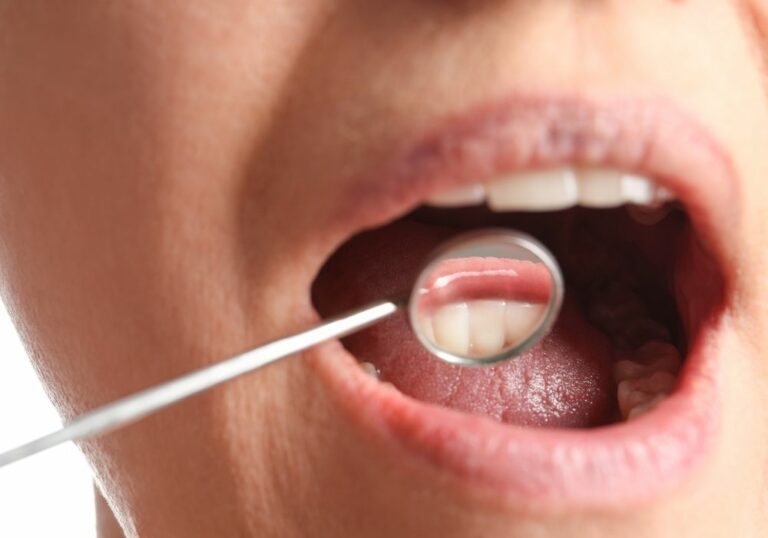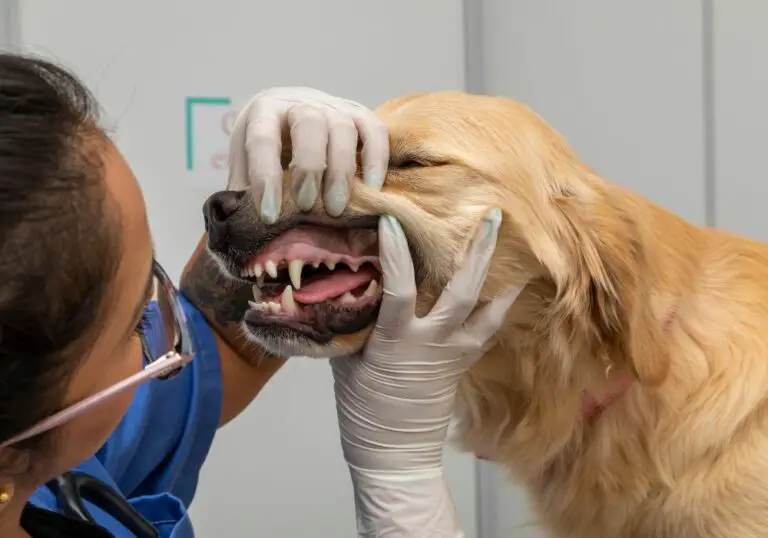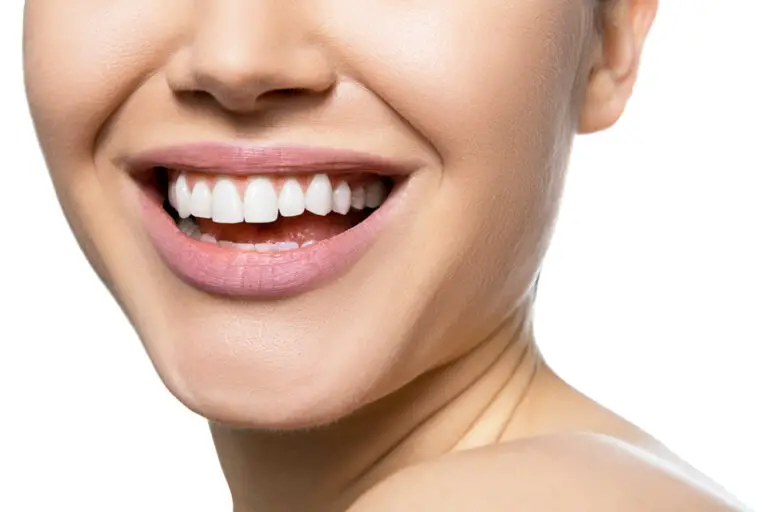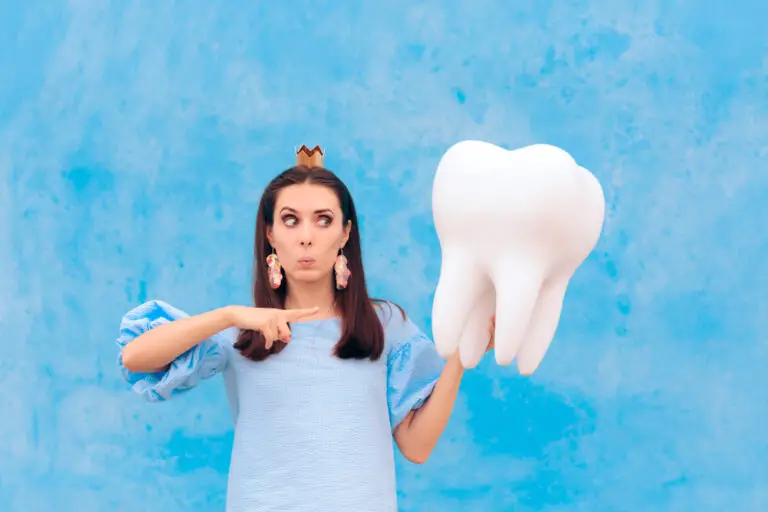It’s very common for adults to have a mix of adult and baby teeth in their mouths. The baby teeth on the bottom row often fall out and are replaced by permanent teeth later than the top teeth. If your bottom teeth still resemble your baby chompers, try not to worry too much about it. There are several understandable reasons why your pearly whites may seem stuck in childhood and what you can do to help the situation.
Typical dental development
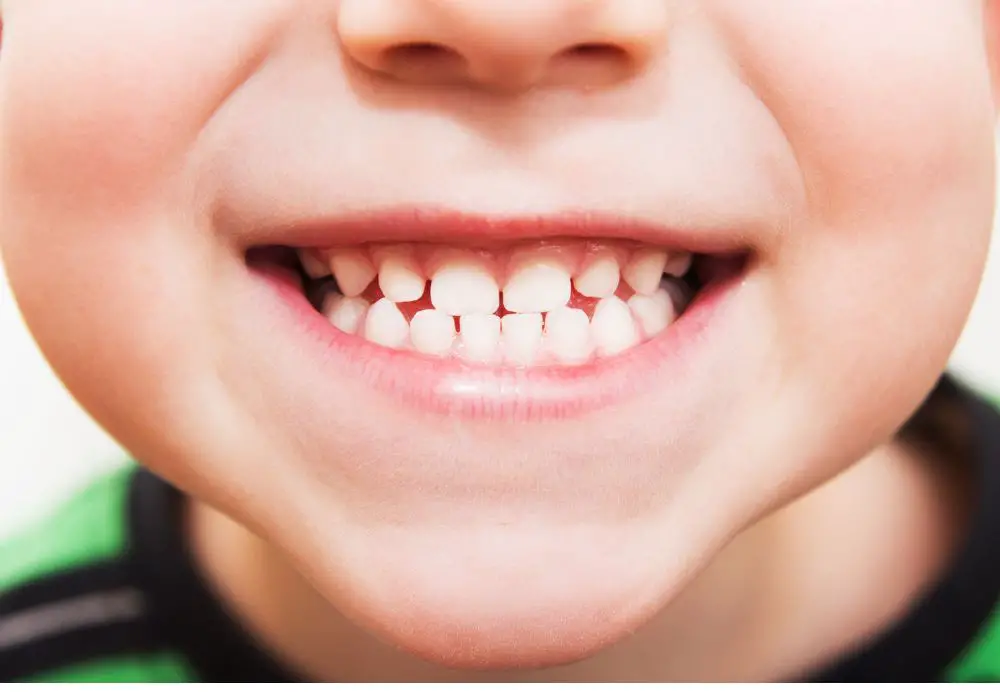
To understand why your bottom teeth may seem delayed, it helps to review normal dental development. Here is an overview of the usual eruption schedule for baby and adult teeth:
- Age 6-8 months – First baby teeth (incisors) emerge
- Age 16-22 months – All 20 baby teeth have arrived
- Age 6-7 years – Permanent first molars and central incisors come in
- Age 7-8 years – Permanent lateral incisors replace baby versions
- Age 9-12 years – Permanent canines erupt just distal to baby canines
- Age 10-12 years – Permanent premolars replace baby molars
- Age 17-21 years – Permanent second molars emerge behind first molars
- Age 17-25 years – Permanent third molars (wisdom teeth) develop last
As you can see, getting a full set of adult teeth takes many years. It’s perfectly normal for a young adult to have a mixture of mature and baby teeth. The bottom teeth often lag behind the top, so your lower smile may seem particularly childish. But don’t assume anything is wrong yet.
Reasons for delayed adult bottom teeth

Here are some common explanations for why your bottom teeth still resemble your baby teeth:
Late development
The bottom permanent teeth may simply be running on the late side of normal. The eruption schedule varies greatly by individual based on genetics, gender, and environmental factors. While most people get their adult bottom front teeth (incisors and canines) between ages 6 and 8, some kids don’t see them until age 10 or later.
The bottom premolars often emerge between 10 and 12 years old, but many children don’t get them until their mid-teens. As long as the teeth eventually push through, you likely have nothing to worry about. Track your dental development and talk to your dentist if you’re concerned.
Retained baby teeth
In some cases, the permanent teeth develop on time, but the baby versions stubbornly stick around past their expiration date. This is called primary tooth retention, or persistent teeth. It most often occurs with the lower canine teeth, though any baby tooth can be retained.
What happens is the permanent tooth buds form underneath the roots of the baby teeth as normal. But as the permanent teeth grow and try to descend, the baby roots fail to fully dissolve and shed. So the adult teeth end up stuck beneath the baby versions that don’t become loose and fall out as expected.
The result is a potentially awkward situation where you have two rows of teeth overlapping in the same space. This will require dental extraction of the persistent baby teeth to allow the mature teeth to erupt and take their rightful place in your mouth.
Delayed development
Less commonly, the formation and emergence of the permanent teeth are markedly delayed. This could be due to genetics, childhood illnesses, poor nutrition, radiation exposure, medications, or other factors influencing dental development.
If X-rays show your permanent tooth buds haven’t mineralized and begun growing by age 6-7, that’s considered late. Other clues are if you lose your baby teeth prematurely but no permanent teeth quickly replace them. See your dentist if you suspect your adult teeth are failing to develop on schedule. You may need help getting your mature pearly whites to show themselves.
Missing adult teeth
In some unfortunate situations, permanent teeth fail to develop at all. This may result from inherited dental anomalies or because babies lose primary teeth early due to extensive decay or traumatic injuries.
Normally, the adult teeth begin mineralizing under the baby teeth within several months of birth. But if the baby tooth dies or extracts too soon, the permanent version may never form. The baby tooth then remains in position where the adult tooth should have been.
Missing adult teeth need replacement with dental prosthetics like bridges, implants, or dentures. These restore your smile and allow proper chewing and speech.
No treatment of cavities
Untreated tooth decay can destroy baby teeth to the point they can’t exfoliate on their own. This allows them to stubbornly overstay their welcome instead of falling out to make room for the permanent teeth.
Pulpal necrosis, abscesses, and destruction of the baby tooth roots prevent the normal shedding mechanism. The dead stubborn baby teeth then block the healthy development and eruption of the permanent replacements growing underneath.
Getting dental restorations or extractions of severely decayed baby teeth can help prevent retention and allow the adult teeth to emerge properly. Proper treatment of your little teeth helps them follow the natural sequence of being replaced by big teeth.
Signs it’s time to see the dentist
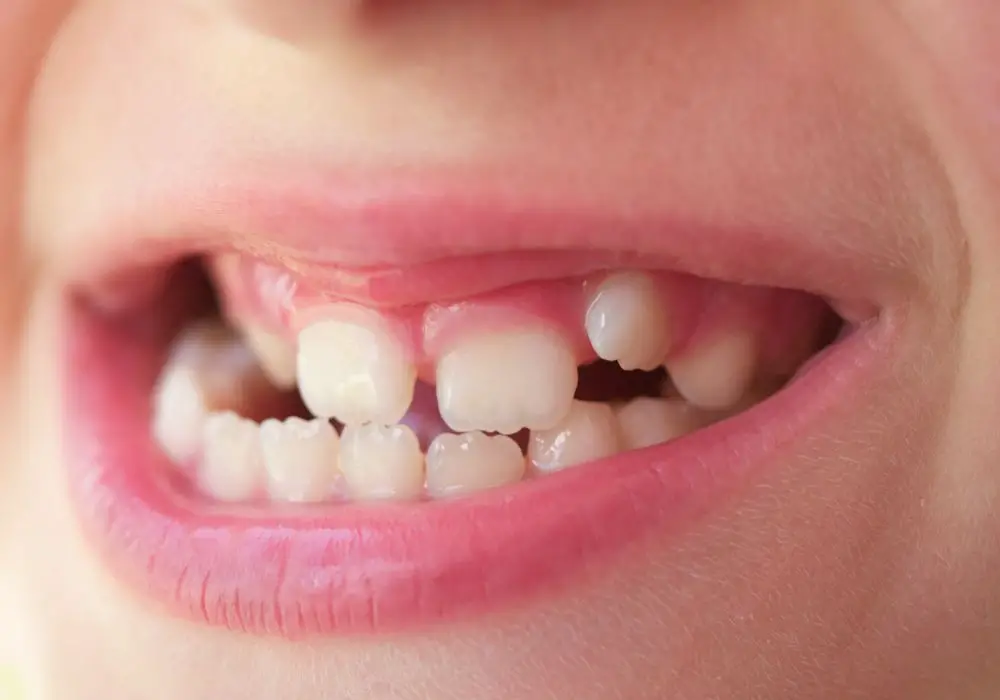
Consult your dentist promptly if you notice any of the following scenarios:
- Baby teeth remain in position long past normal eruption times for permanent teeth
- Permanent teeth don’t emerge on schedule based on your age and development
- Crowding, shifting, flaring, gaps, or misalignments among the bottom teeth
- Pain, sensitivity, or swelling around unerupted permanent teeth
- Pocketing around baby teeth
- Retained baby teeth blocking or overlapping permanent teeth trying to come in
- Redness, bleeding, or inflammation of the gums around delayed teeth
- Asymmetrical or uneven eruption pattern compared to the other side
The dentist has imaging tools like bitewing x-rays, panoramic x-rays, and CBCT scans to diagnose what’s going on with developing teeth. They can see your tooth buds hidden beneath the gums and spot problems early.
Your dentist can then recommend appropriate treatment if indicated. It’s best to address delayed or problematic dental development sooner rather than later for ideal results.
Treatments to bring in permanent bottom teeth
If your dentist determines your lagging dental development requires intervention, here are some common treatment approaches:
Monitoring
If imaging shows your adult teeth buds look normal but just need more time to mature and erupt, your dentist may recommend periodic monitoring. They will have you return every 3-6 months for evaluation as the teeth continue developing.
As long as the teeth remain on course, just giving them extra time to descend may be all that’s needed. But monitoring ensures issues like impaction or poor alignment get addressed promptly if they do arise.
Extraction of baby teeth
If primary teeth are being retained long-term and appear to be blocking eruption of permanent teeth, extraction is usually indicated. This involves numbing up the area with local anesthetic and then gently removing the baby tooth and root.
Sometimes simply eliminating the barrier of the persistent baby tooth allows the permanent version to naturally migrate down into position afterwards. If not, additional orthodontic guidance may be needed.
Exposure and bonding of impacted teeth
If X-rays show permanent teeth stuck in bone with baby teeth blocking their path, surgical exposure and bonding may help guide them into place. The dentist cuts away gum tissue and removes just enough bone to reveal the buried permanent tooth.
They then place an orthodontic bracket or attachment on the tooth and attach a chain, spring, or brace to help pull it downwards into alignment. The impacted tooth basically gets traction to erupt properly.
Dental devices
For an array of orthodontic problems, the pediatric dentist or orthodontist may use customized appliances in the mouth. Removable retainers, herbst appliances, palatal expanders, or fixed braces can all guide delayed teeth into better position.
These devices generate gentle pressure on the teeth and bone structures to foster proper dental development and alignment. They prevent issues like crowding and cross-bites that undermine having a healthy, functional bite pattern.
Dental restoration
Treating cavities and other problems with baby teeth can help ensure normal exfoliation. Filling or capping damaged baby teeth removes infection and strengthens roots. This may allow the permanent successors to naturally descend when the baby teeth finally shed.
Vital pulpotomies or nerve treatment can help save infected baby teeth to buy time for permanent teeth to develop. Stabilizing primary teeth prevents gaps and keeps space available for adult teeth.
Prosthetic tooth replacement
If some teeth are congenitally missing or become damaged beyond repair, prosthetics like bridges, implants, or dentures can replace them. These maintain your smile until permanent teeth develop or act as permanent tooth substitutes if they never form.
With patience, perseverance, and proper orthodontic guidance, most cases of delayed dental development resolve with minor treatment. But if problems persist, visiting your dentist promptly for advice is essential.
There are many options for assisting your permanent pearly whites into their optimal position. Keep smiling and let your dental team guide you.
Impacts of delayed bottom teeth
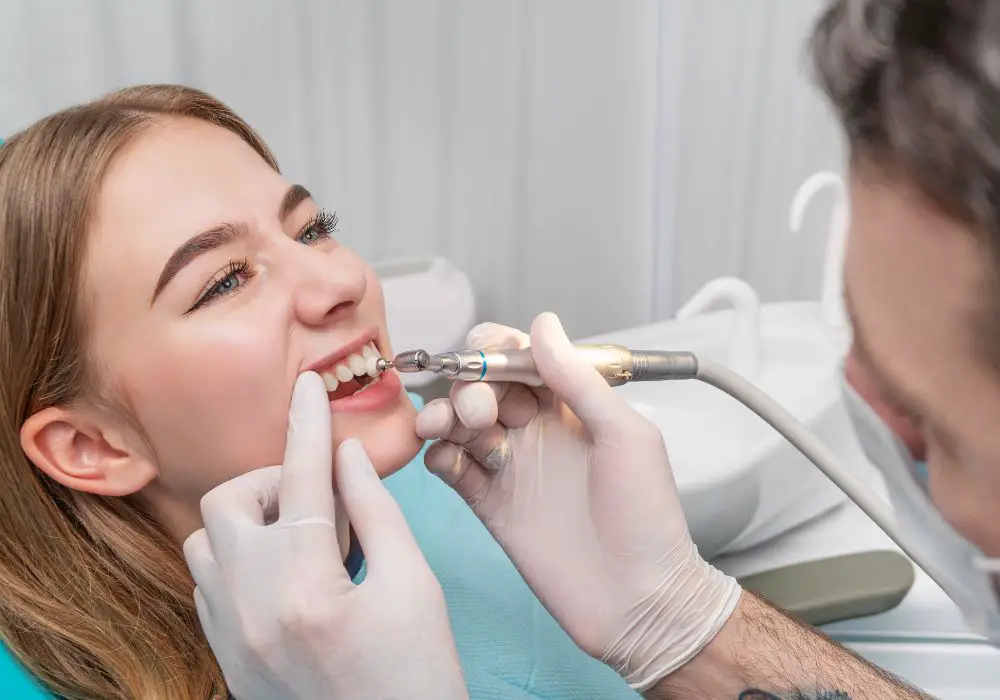
Abnormal dental development can lead to various issues if not treated properly, including:
- Progressive misalignment and crowding as you grow
- Occlusal interference and problems with bite symmetry
- Premature loss or excessive wear of remaining baby teeth
- More plaque and tartar buildup around delayed teeth
- Increased risk of tooth decay and periodontal disease
- Jaw pain, TMJ issues, and chewing/biting difficulty
- Poor nutrition due to dental pain or difficulty chewing
- Speech impediments requiring therapy
- Low self-esteem and confidence due to smile appearance
- Anxiety avoiding dental care due to embarrassment
Thankfully, early diagnosis and treatment of delayed tooth eruption prevents most negative impacts. Having regular dental checkups plus following your dentist’s recommended treatment plan leads to much better outcomes.
Caring for developing teeth
As you wait for your permanent teeth to emerge, excellent oral hygiene and smart dietary choices can help protect your smile. Follow these tips to care for your pearly whites:
- Brush carefully twice a day with soft bristles and fluoride toothpaste
- Clean between teeth daily with floss or interdental cleaners
- Avoid aggressive brushing and be gentle around painful or erupting teeth
- Rinse with an ADA-approved antimicrobial mouthwash
- Eat a tooth-healthy diet low in sugars, acids, and refined carbohydrates
- Avoid constant snacking and limit sugary treats to mealtimes only
- Stay hydrated with water throughout the day
- Take any supplements your dentist recommends for dental health
- See your dentist regularly for exams, x-rays, and professional cleanings
- Follow your dentist’s at-home oral hygiene instructions
Proper daily brushing and flossing, smart dietary choices, fluoride exposure, and regular dental visits will help keep your teeth strong and decay-free. This also allows your permanent teeth to emerge into a clean, healthy environment.
When to see an orthodontist
Consult an orthodontist promptly if you notice any of the following:
- Your bite alignment feels off or your jaws don’t meet properly
- You have crowding, gaps, or crooked positions of permanent teeth
- Primary teeth are still retained alongside permanent teeth
- Permanent teeth are missing or impacted
- Teeth are erupting out of sequence or ahead of schedule
- Grinding, chipping, or abnormal wear of teeth
Orthodontists have advanced specialty training to diagnose and treat delayed dental development. They can create personalized treatment plans to guide eruption and alignment of your permanent teeth.
Braces, Invisalign, or clear aligners may be options. Other orthodontic appliances can help create space or traction for stuck teeth to emerge in better position. See an orthodontist sooner rather than later for best outcomes. Early intervention prevents more extensive treatment later.
Frequently asked questions
Here are answers to some common questions about late-erupting bottom teeth:
Are my teeth weaker or more prone to decay if they erupt late?
Not necessarily. As long as x-rays show the permanent teeth buds look normal, just a late emergence isn’t cause for concern. Once they erupt fully, late teeth should be healthy and strong. But be sure to care for them well, as emerging teeth can be vulnerable to caries.
Can I get braces if I still have some baby teeth?
Yes, orthodontic treatment is often possible even with a mix of primary and permanent teeth. The braces can guide permanent teeth into position around baby teeth until those are ready for extraction. Retained baby teeth will be removed at the appropriate time.
What should I do for teeth pain from crowding?
See your dentist promptly if your teeth hurt from crowding, blocked eruption, or other issues. They can determine if any baby teeth need extraction or if interventional orthodontics may relieve the pressure. Leaving crowding untreated leads to worsening problems.
How can I motivate an impacted tooth to erupt faster?
Unfortunately you can’t make a tooth erupt before it’s biologically ready. Focus on diligent hygiene, healthy diet, and regular dental visits. But allow your dentist to manage the actual timing of emergence. Trying to take matters into your own hands risks harming developing teeth.
What if my adult teeth never form properly?
If your permanent teeth are congenitally missing or unlikely to erupt, your dentist will discuss replacing them with dental prosthetics. Bridges, partials, implants, or dentures can restore chewing function and maintain your smile. You have many good options even if some teeth don’t develop.
Conclusion
Delayed emergence of permanent bottom teeth affects many people. With attentive dental care and patience, your adult pearly whites should arrive on cue. If you have concerns about your dental development, see your dentist and orthodontist for advice. With their guidance, you’ll have a correctly aligned, full grownup smile before you know it!

